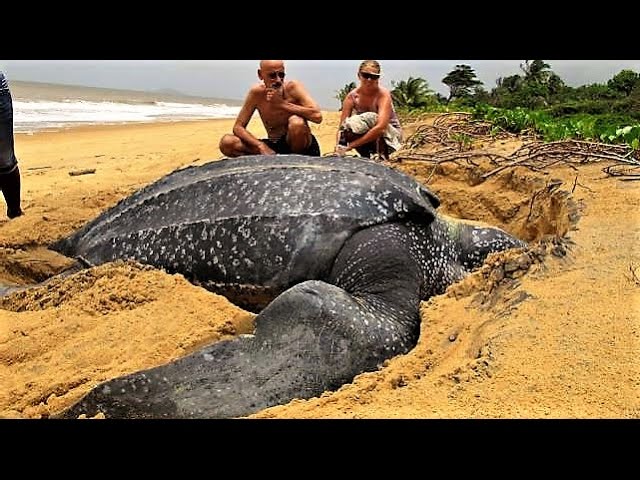From long necks and pig snouts; to the world’s largest turtle; Here are 15 strange and unusual turtles
Subscribe to Epic Wildlife http://goo.gl/6rzs5u
Let’s Connect
— http://www.epicadamwildlife.com/
— http://www.facebook.com/epicadamwildlife
— http://www.twitter.com/epicwildlife
— http://gplus.to/epicwildlife
Spiny Softshell Turtle
It’s recognized as one of the largest freshwater turtles in North America … females are known to grow a shell around 18 inches long… and can live to be more than 50 years old. The creature gets its name from the series of small conelike spines projecting from the front edge of its carapace. Many people think it gives them an appearance similar to a dinosaur.
African Helmeted Turtle
While they appear innocent enough, the loopy smile conceals a stone cold killer. They live in fresh and stagnant waters of sub-Saharan Africa and are known to be omnivorous, feeding on anything from fish to small crustaceans. When larger prey like doves arrive to drink, groups of these turtles have been observed to capture and drown the prey. The group causes so much commotion that they’re often mistaken for crocodile attacks! It’s the only species of turtle known to exhibit such behavior.
Mata Mata
Alligator Snapping Turtle
Their appearance invokes comparisons to dinosaurs, what with their spiky shells, thick scaled tails and beaklike jaws. Considered one of the world’s largest freshwater turtles, they can weigh around 176 pounds on average … while their carapace averages a length of more than 30 inches. The largest ever specimen of alligator snapping turtle was said to have been found in Kansas … but that account was never verified. Along with that scary look and impressive weight, they have long life spans, too … living up to 100 years. And while their rough skin does resemble that of an alligator, their name is really inspired by their springlike neck and powerful jaws. If they’re sufficiently provoked, their bite is easily capable of amputating human fingers!
Eastern Long Necked Turtle
Obviously named for its neck, this reptile is found in Australian lakes … and is actually recognized as a species of snake-necked turtles.. Its neck can grow about as long as its carapace (KARE-uh-pace) … which can average over 11 inches. This species does not pull its head directly back into its shell …. Because they bend their head sideways, they’re known as ‘side-necked turtles’. These carnivorous critters are also known as ‘stinkers’. (they have a lot of names, right?) When the animal feels threatened, it releases a foul smelling substance from its musk glands. Did you know the turtles can strike at prey by quickly straightening their neck?
Pig Nosed Turtle
As you might expect, this critter’s name is inspired by its unusual proboscis (pruh-BOS-is), which resembles a pig’s … and it serves more than an ornamental function. It can be used as a snorkel protruding above the water’s surface … and allowing the turtle to stay submerged. The nose is highly sensitive to motion, and assists in locating prey in murky waters. They’re fairly large critters, weighing up to 40 pounds and are native to New Guinea and Australia. Did you know that it’s the only freshwater turtle with flippers not unlike marine turtles?
The huge creature in the photograph can easily be identified as such by virtue of its enormous flipper that occupies the lower third of the image. We think the photo was taken in Florida, where five species of sea turtles are found. The turtle appears to have buried its head in the sand while the couple looks on. But according to experts, that behavior is entirely normal for the critter. Researchers studied a female leatherback at the Archie Carr National Wildlife Refuge in 2015 to observe the female leatherbacks nesting habits. She crawled from the water to excavate an area of the beach to serve as a place to deposit her eggs. Over the course of 90 minutes her flippers dug a chamber into the sand … into which she deposited her eggs … Then camouflaged the eggs by scattering about clumps of sand. Did you know the Leatherback is the largest of all living turtles, and can weigh more than 1,500 pounds. It’s name comes from the oily, leathery skin that is stretched over a series of bony plates. It’s the only sea turtle that does not have a hard shell




